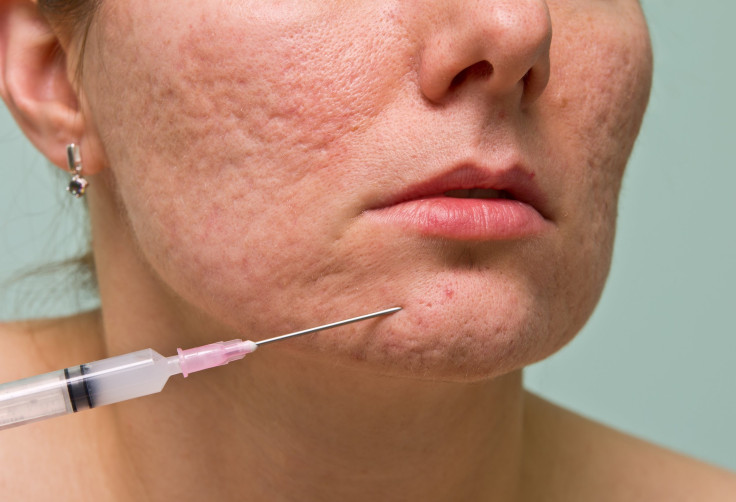Tattoo Removal Lasers Might Work As An Facial Acne Scarring Treatment

People looking to get rid of their tattoos often turn to laser tattoo removal, a process that breaks up the pigments of the tattoo with a light beam. Tattoo removal consists of several treatments over a period of time, with each one making the tattoo fainter and fainter.
But a new study finds that the lasers used in tattoo removals might be useful in treating some other health issues — such as facial acne scarring. The study, completed at the Laser & Skin Surgery Center of New York and published in JAMA Dermatology, involved researchers using a picosecond 755-nm laser (such as those used for tattoo removal) with a diffractive lens array in treating facial acne scarring. There were 15 women and five men, with an average age of 44 years old, in the study — and all of them had facial acne scarring. Over a period of time, the patients received 6 treatments.
Dr. Jeremy Brauer, an author of the study, notes that the study’s participants were “satisfied to extremely satisfied” with the results. By the time their final treatment had rolled around, the appearance and texture of their skin had greatly improved. There was a 25 percent to 50 percent global improvement at the one month follow-up following the treatments.
Currently, patients with acne scarring use certain types of lasers in procedures like Focal Acne Scar Treatment (FAST). FAST involves using a high intensity CO2 laser. Lasers help in removing scars due to their ability to poke microscopic holes in the skin, which forces the immune system to build collagen, which is the main structural protein of connective tissues in animals. New collagen then fills and repairs scars. Other procedures involve platelet-rich plasma (PRP) therapy, which injects platelets from the patient’s blood into their scars. Various other procedures and remedies can be found here.
But the authors of the new study believe that tattoo lasers can be specially helpful because the results “suggest that improvement in scarring from this treatment goes beyond remodeling of collagen,” potentially making better progress. But “additional studies with larger sample sizes, specific scar subtype stratification and histologic analyses are needed,” the authors note.



























